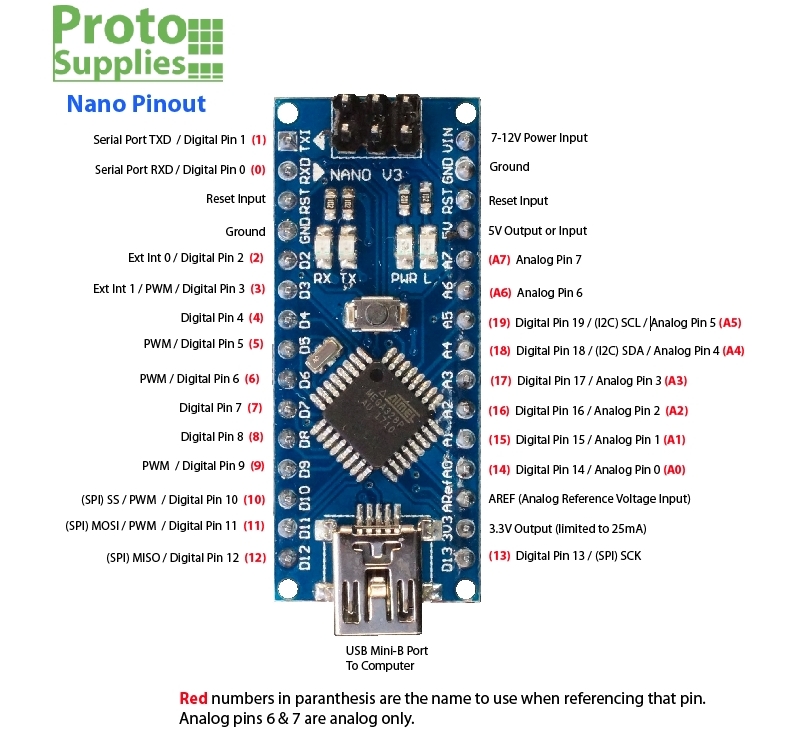
But if you continue to hold the MPU60-50 forward, the Arduino will continue to take away 5 degrees, in this case, it's every 5/100th of a second! So our servos actually end up moving pretty quickly ! If you find that your servo are moving too fast, you can always swap out the "5" for a smaller number. Now, 5 degrees doesn't sound like a lot, and it's not. The base frequency of Timer 2 is 31372.55 Hz resulting in a frequency of 490.2 Hz (ie. The Arduino Nano is Arduinos classic breadboard friendly designed board with the smallest dimensions. By default Timer 2 has a prescale of 64 (ie. The last thing we do is tell our servo to move to whatever the value of our position variable happens to be. Explanation: The Arduino Nano uses the ATMega328P microcontroller, same as the Arduino Uno. If you think back to the first few lines of code, we made the value of posY 90, for 90 degrees, but if we take away 5 degrees, we're at 85. We are also telling the Arduino to take 5 away from the value of our posY variable. So if the Pitch value is less than -30, and we haven't hit the limit, we tell the Arduino to print "forward", but that's not all.

The second condition checks to see if the servo is already at its minimum position (zero degrees).

The first half of our conditional statement checks if our Pitch variable is less than -30, which in this case is the same as learning the MPU60-50 forward. LAST REVISION:, 09:46 AM Note that this chart is for the DIP-package chip. Arduino MKR WiFi 1010 Features The following are the main features of Arduino MKR Wifi 1010. These pins are mainly employed to control the speed of the motor. These pins generate analog results with digital means. Technically the output is digital but in the form of PWM, but it seems to be analog. ATmega168/328P-Arduino Pin Mapping ATmega168/328P-Arduino Pin Mapping a diagram showing the correspondence between the pins on an Arduino board and those of the ATmega168/328P microcontroller. PWM Pins 13 PWM pins incorporated on the board. Here we have a conditional statement with two conditions. Arduino Nano gives analog output in range of 0 to 255. Int sendData // One element array holding our random number RF24 radio ( CE_PIN, CSN_PIN ) // Activate the Radio void setup ( ) #define CSN_PIN 9 const uint64_t pipe = 0x1 // This is the transmit pipeline
Arduino nano pinout pwm code#
This code is also compatible with an RF Nano Integer from one RF Nano to a second RF Nano, to show just how Hey guys! This example code is designed to send one random


 0 kommentar(er)
0 kommentar(er)
